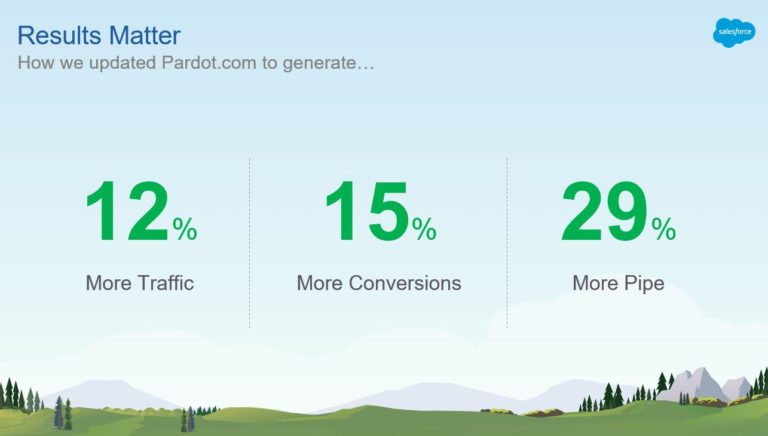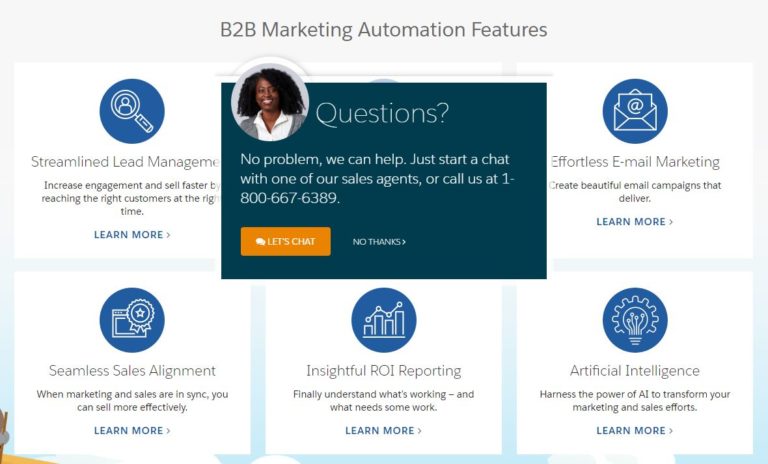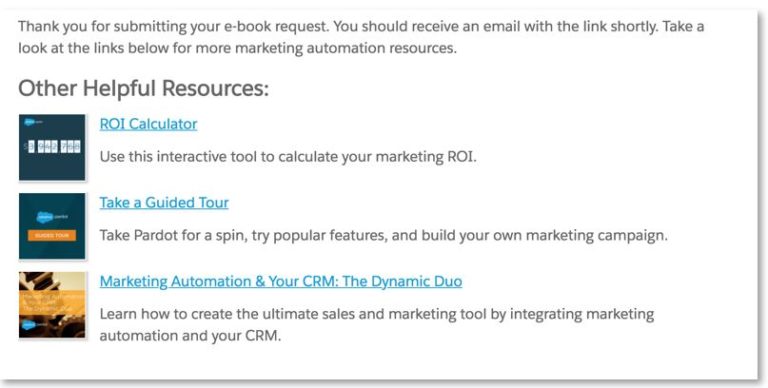Posted by: ClickZ
Posted on: 9/4/2019
Salesforce has recently made website optimization updates to Pardot.com which have effectively generated 12% more traffic, 15% more conversions and 29% more leads. Now, they want to show you how they did it. Pardot is a division of Salesforce focused on marketing automation and lead nurturing for the B2B sector.

ClickZ will be hosting a webinar with Bill Reed, Product Marketer for Salesforce, to discuss how they got such positive results and translate their own experience into strategic and practical ways for you to turn your website into a primary source for leads.
If you’re interested in learning more, you can register for the upcoming webinar, “How to Turn Your Website into a Lead Generation Machine” which is scheduled to take place on September 10th at 1 pm EST.
Content produced in collaboration with Salesforce.
A deep dive into what’s working (and what’s not) with website optimization
Now is the perfect time to focus on optimizing your website for lead generation. The Pardot webinar breaks down some of the key steps that Salesforce took to increase traffic, leads, and sales to Pardot.com. The first step was self-analysis.
Salesforce recommends that businesses begin their website optimization initiative with self-discovery, by asking the following questions.
- What is working and what isn’t?
- What pains are you feeling with your website?
- If you could fix one thing above all, what would it be?
- What’s missing from the site?
- What do you want people to do on the site?
- Describe the perfect scenario. What does success look like to you?
The answers to these questions will set the scope of your redesign project and help inform the next steps. More importantly, having a list of desired accomplishments will help you set measurable goals such as driving more traffic, improving SEO rankings and increasing conversion rates.
Salesforce asked these exact questions before embarking on a redesign for Pardot.com that led to making several concrete changes to the site, improving overall performance.
Practical steps taken for Pardot
One of the simplest ways to improve website usability is to create intuitive navigation that helps chart a course for customers and prospects. Salesforce changed their navigation to answer the most common user questions as follows:
- What can Pardot do for me?
- How much does it cost?
- Why should I use Pardot over someone else?
- How do I do it?
- Who are you really?
After updating the navigation to answer these questions, pageviews to Pardot.com increased by nearly 10%.
Here’s what that navigation looks like now:

It’s all about the story
One of the key elements to making content flow in an intuitive (and helpful) way is to connect it so that it tells a story. Salesforce highlights the importance of communicating your content as a story, rather than just listing benefits and features in standalone, ad hoc fashion.
They did this by bucketing features with relevant headlines and descriptive text so that users could easily envision the impact of each feature to their bottom line.

Presenting key features this way reduced bounce rate on Pardot.com by 14.4% (40.3% vs. 47.2%) and increased conversions by nearly 27%.
Salesforce also included calls-to-action throughout the website, but only where they made the most sense. This gave users the opportunity to take action more often and helped increase conversions by 14%.
Use forms wisely
Salesforce focused on optimizing form length and content to weed out unqualified leads while increasing overall conversion rate.
“The goal is to increase the quality of leads coming in by collecting enough data to validate each lead.” –Salesforce
Once you have the perfect lead form, it’s important to test them out yourself to see if sales is appropriately following up. Some questions to ask are:
- How long does it take for sales to follow up?
- Do they get routed properly?
- Does sales qualify the lead well?
Optimizing your post-lead follow-up strategy can help turn prospects into customers, but it also gives users the opportunity to continue learning (and converting) after they submit a form.
One way Salesforce did this was by presenting links to additional resources on their form confirmation page.

By identifying what’s working and what needs improvement, creating measurable goals and mapping out a concise plan of action, businesses can optimize their website’s performance for every stage of the customer journey.
If you’re interested in learning more about how Salesforce created and implemented their successful website optimization strategy for Pardot.com, register for the upcoming webinar, “How to Turn Your Website into a Lead Generation Machine” which will take place on Tuesday, September 10th at 1 pm EST. This webinar will also be available on-demand after the event.
The post How Pardot optimized their website into a lead generation machine appeared first on ClickZ.

